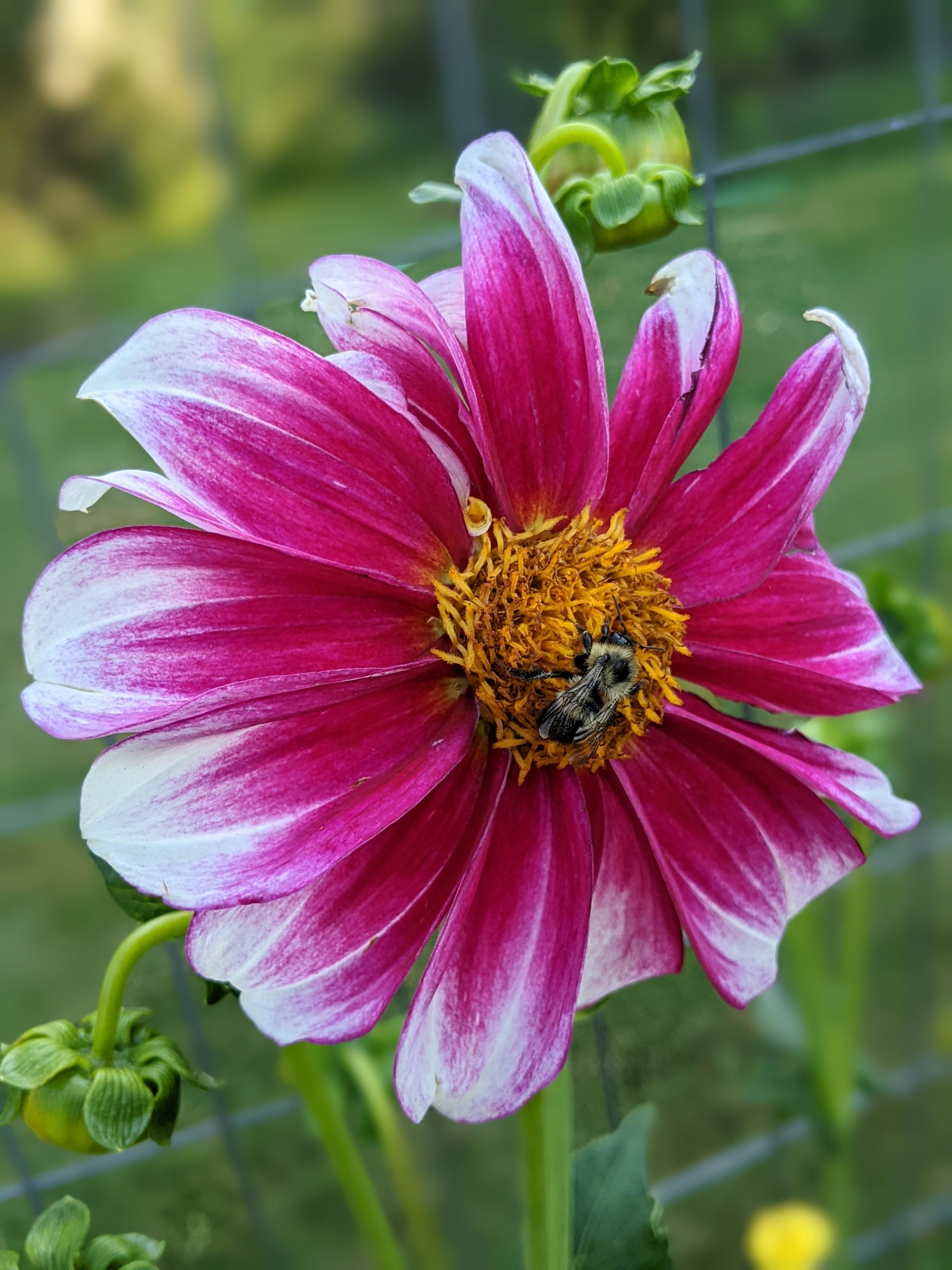
We are still applying Codling moth sprays. We are still catching moths Whatever spray you use, plan to spray again in according to label directions. It is good to rotate different sprays so the bugs don’t develop a resistance. We will be spraying till middle of August for the Codling Moths. Thinning your clusters of apples to 1-2 apples will help lessen the codling moth infestation.
We have not caught the first western cherry fruit fly, but should happen soon, especially if your pie cherries are turning color. Spray every 7-10 days as your spray of choice indicates. Pyrethrin or Spinosad are your least toxic products.
Disease infections will come to a halt as we dry out, keep irrigation water off leaves, branches and stems to avoid further infection.
Aphid populations will start to decrease when the hot weather starts, you may still see curled leaves from earlier aphid infestation, but populations will diminish.
Eriophyid mites are responsible for yellow to brown to red spots and blisters on apple, pear, and mountain ash leaves. It is too late to spray for blister and rust mites now. Fortunately most damage is cosmetic only and will not injure plants.
Spider mite populations will be increasing when the weather turns hot and dry. Check mite-susceptible plants such as juniper and spruce. Insecticidal soap plus 1 tbsp/gallon of sulfur is the least-toxic option for mites. Spray in the evening or early morning.
Poplar borer adults are starting to emerge from aspen trees and will soon be laying eggs in new aspen. This is the time to apply trunk insecticide sprays to healthy aspen to prevent poplar borer attack
Wilting spruce tree terminals (top branches) can mean White Pine Weevil larvae are feeding inside the tip branch. Remove and destroy wilted, browning spruce tips as soon as you see them.
Be on the lookout for spruce budworm and tussock moth larva starting to be active and eating away at the new growth on spruce and douglas fir trees, Bt is your least toxic spray.
Grasshopper populations are increasing. As grassy areas dry up, grasshoppers may move into gardens and landscapes. For large infestations, you can protect plants that grasshoppers may be feeding on with row cover cloth or apply bran baited with carbaryl (trade names for this insecticide baited brand include Debug and Eko Bran).
Knapweed is starting to bloom. Bloom time is the best time to mow knapweed to diminish seed dispersal.
Field bindweed is starting to bloom now. This is the best time to treat field bindweed with glyphosate.
Cabbage worms are chewing holes in the leaves of cabbage heads now. Bt(Bacillus thuringensis) is the least toxic option for cabbage worms, spray in the evening and add 1 tbsp/gallon of insecticidal soap.
The best way to manage pests and maintain plant health this time of year is to keep plants well-watered. In hot, dry weather, trees and shrubs need a 1-2 hour soak every 7-10 days. Water-stressed plants develop papery-dry, whitish to brown, curled leaf margins
Colorado potato beetle larva are present on potatoes, tomatoes, and eggplants now. Handpick or spray with Spinosad for beetle larva. The cabbage aphid or brassica aphid, is a pest insect that infests cruciferous plants, including cabbage, broccoli, cauliflower, and other members of the Brassicaceae family. They are very common throughout the summer. Use a strong stream of water to physically dislodge aphids from the plants. Repeat this process as needed. If infestations are severe and other methods have not been successful, Organic options include insecticidal soap, horticultural oils.
